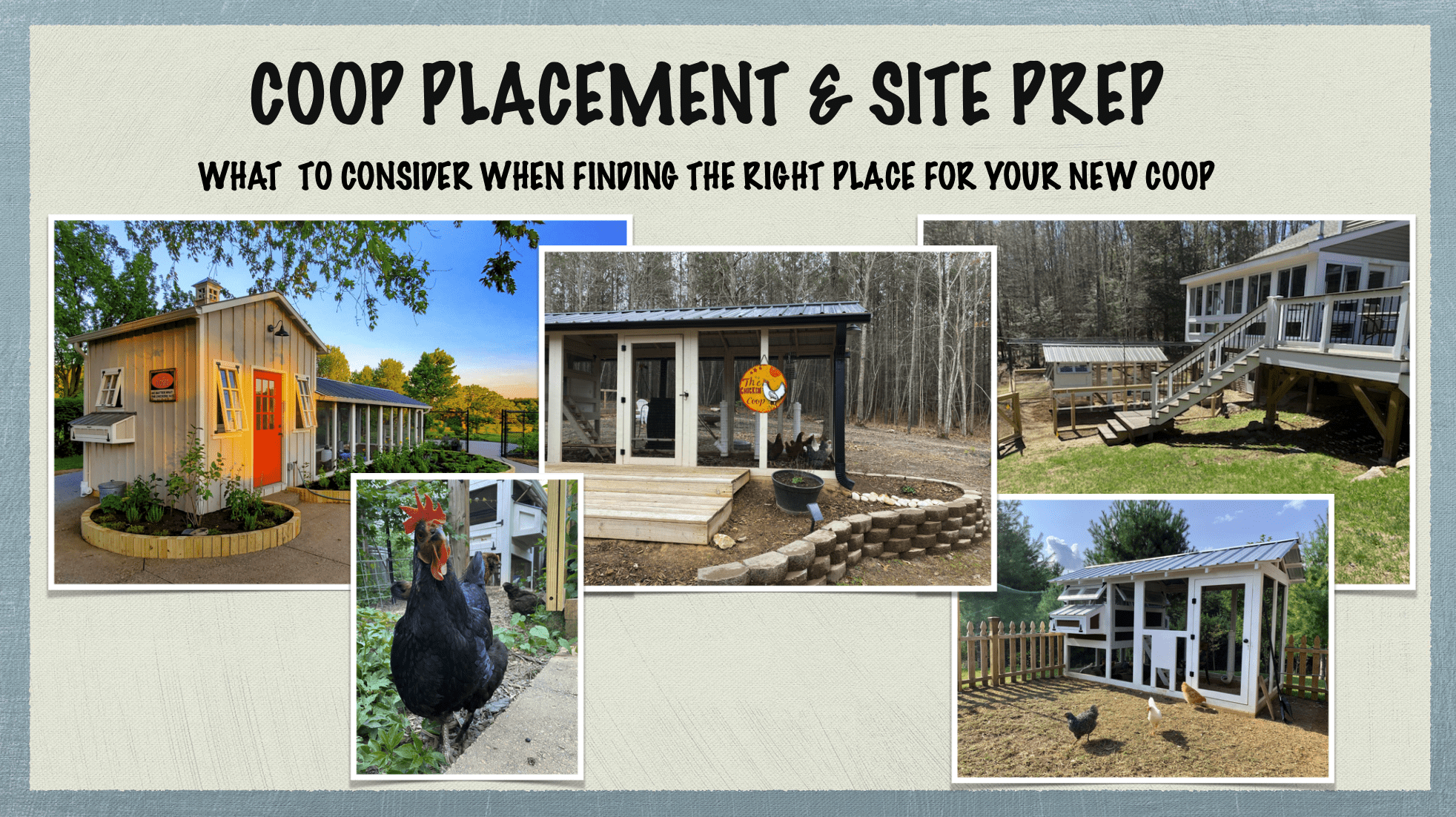
There are many factors to consider when finding the right place for your new chicken coop. We explore the different variables that can affect your decision.
LOCATION, LOCATION, LOCATION
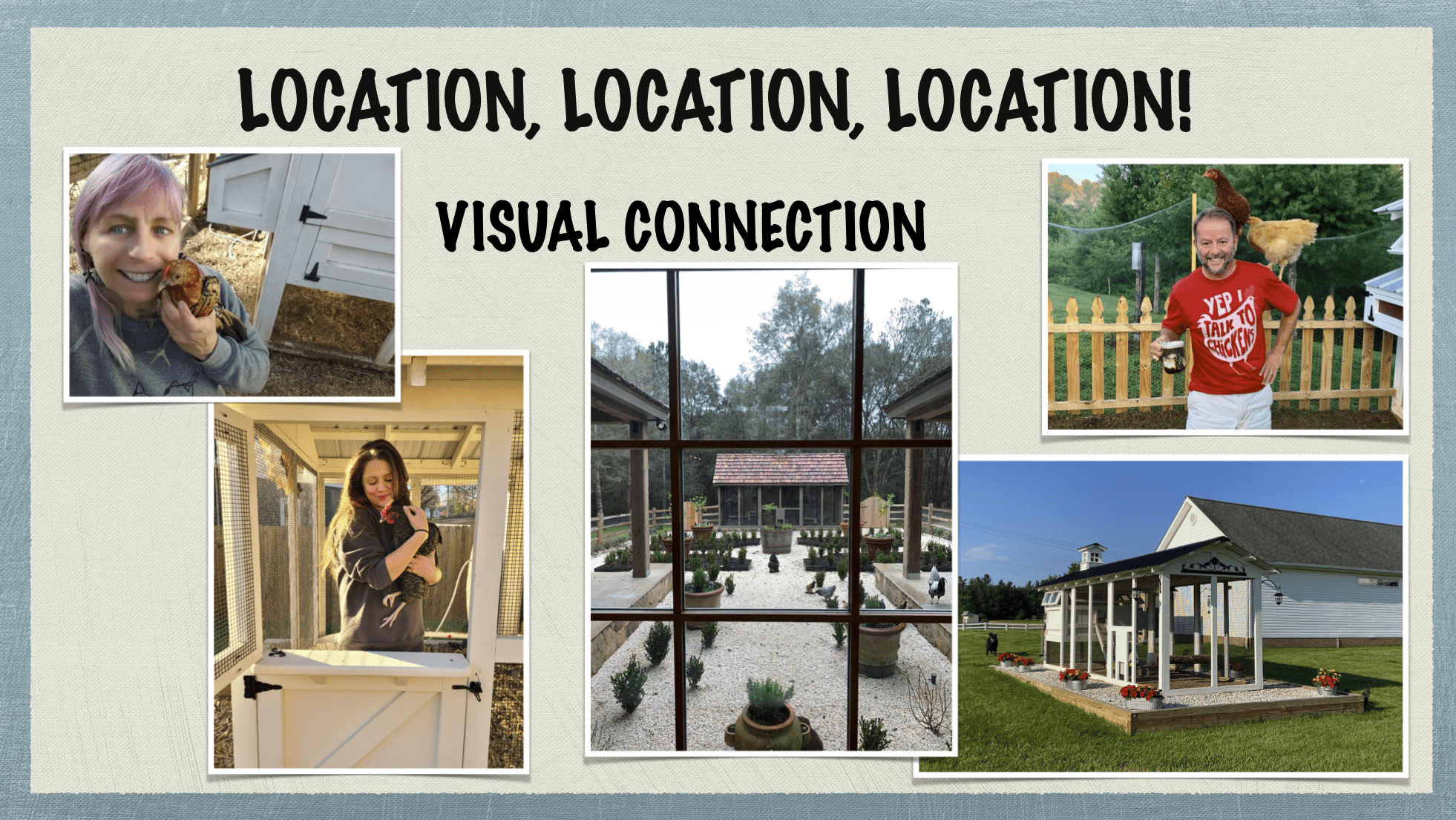
We believe a visual connection is important for many people. Being able to see your chickens and have them close to the house so you can interact with them is a big plus for many people.
It really taps into the therapeutic aspect of having chickens. No matter what’s going on in your day to be able to destress by looking at or (even better) holding your chickens can make a huge difference.
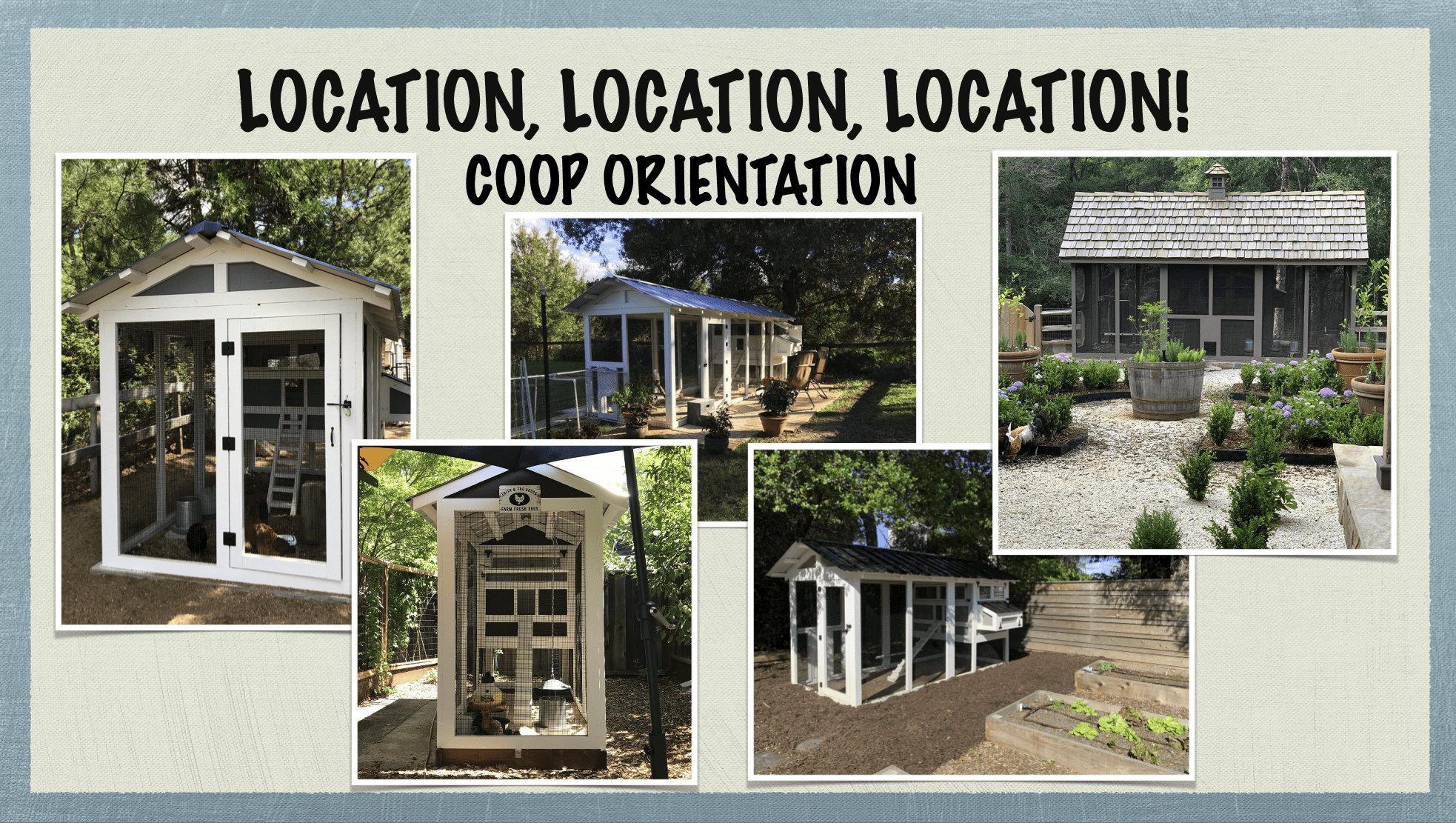
Coop orientation goes along with the visual connection. Many people think the nicest parts of Carolina Coops are the back where the henhouse is. But we feel when you place your coop, you will want to be able to see your flock inside the run. So placing the coop so the henhouse is in the back of your sight line will be better.
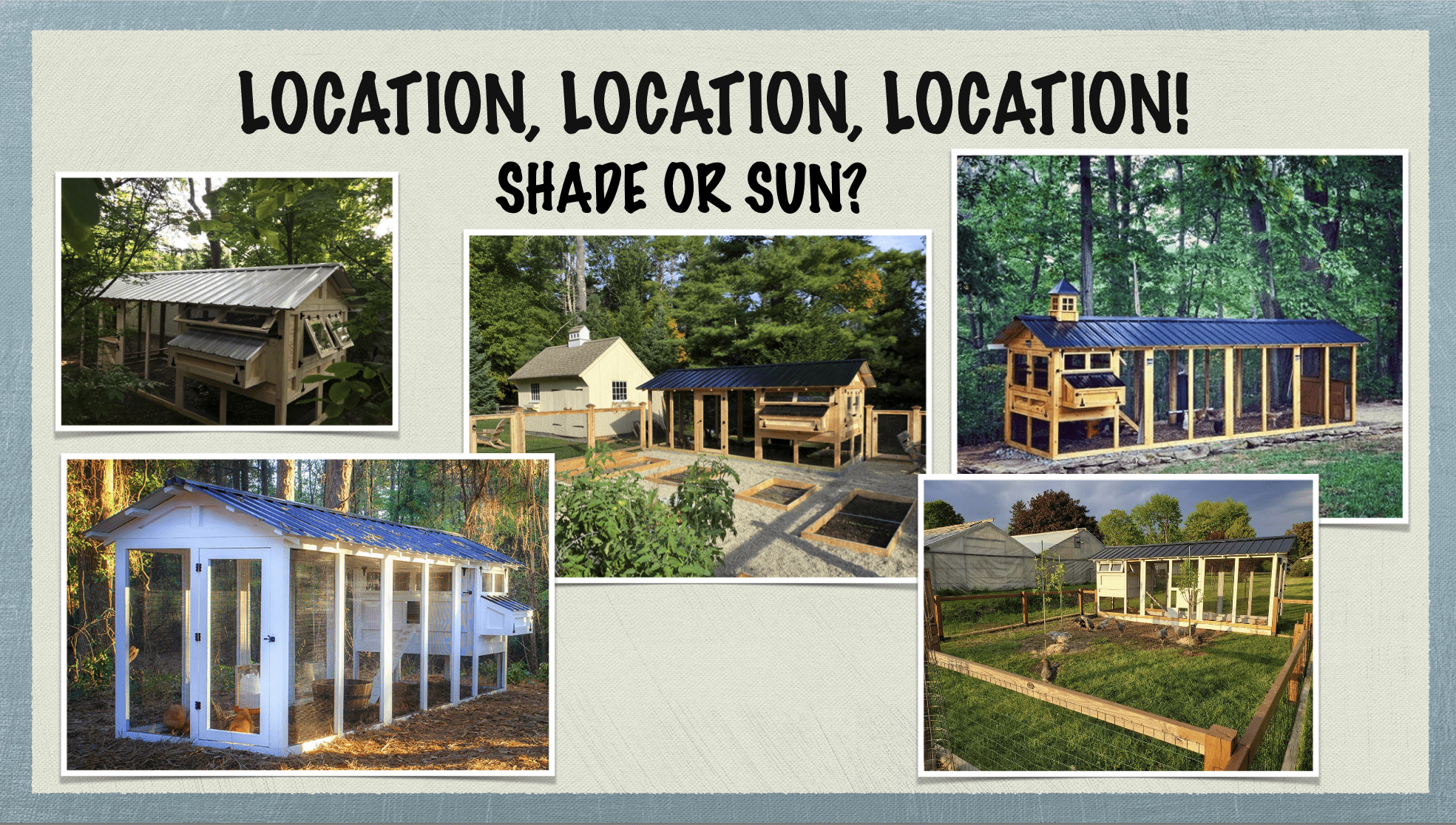
Our coops can go in full sun or take full shade. In fact, our metal roofing works well at keeping out the extreme heat, even if it’s black.
Here are some things to consider whether you put your coop in full sun or in the shade.
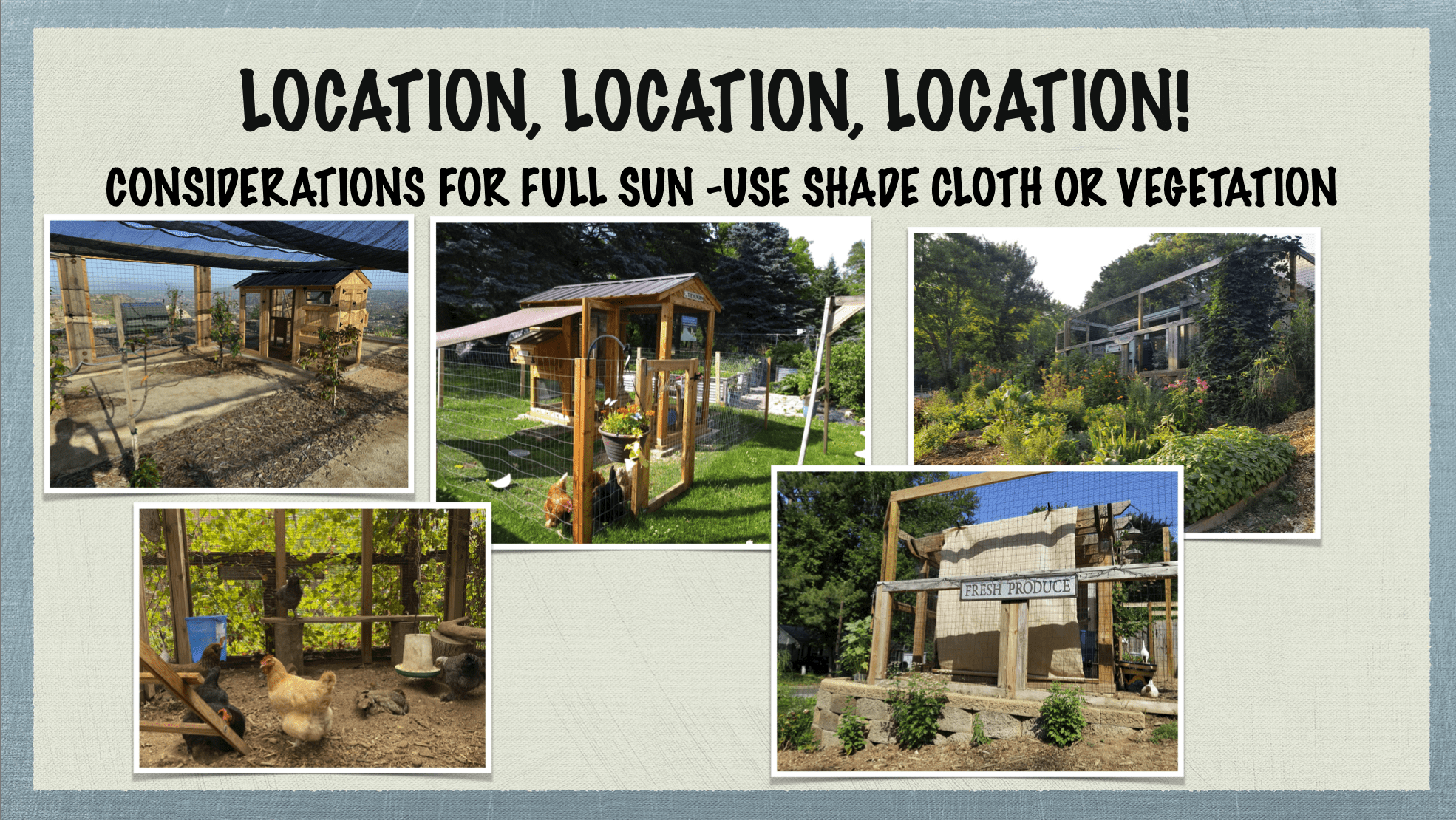
Like we said, our coops do just fine in full sun, because we have a covered run. But you can also shade the hot, summer sun that comes in with either a shade cloth or grow vegetation that climbs up.
Hops and grape vines provide great natural shade for your chickens, and an added bonus is many like to eat grapes (or the beetles that feed on the grape vines in some places) and hops can also be beneficial against certain bacteria in chickens.
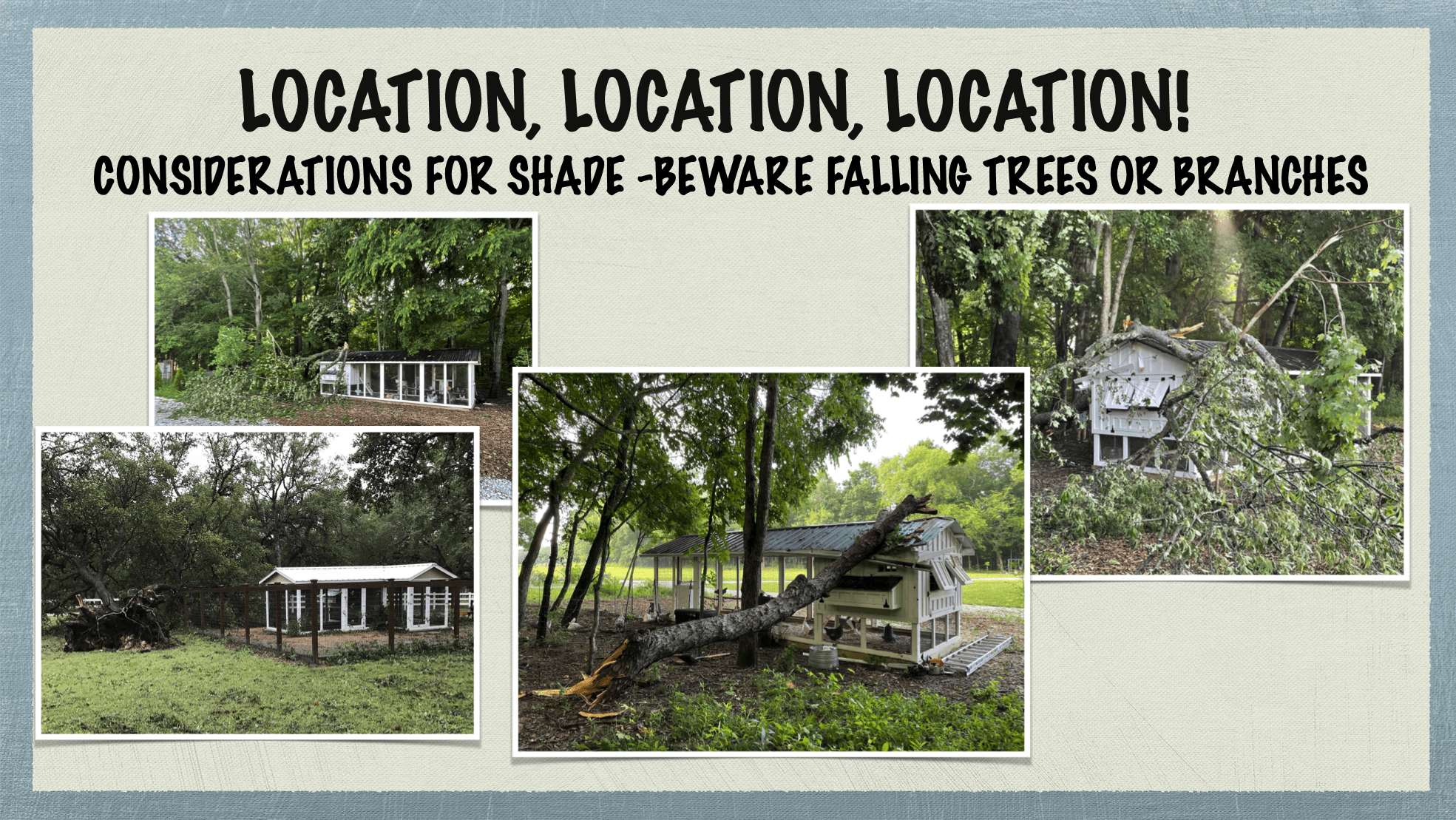
Having shade for your chickens is crucial. Our coops provide shade with our covered runs, but it’s always good to have built in shade for your flock, especially in the summer. It also helps provide protection from aerial predators.
However, there is a concern when there are large trees around that they can fall. Our chicken coops have withstood a lot of damage because they are so well built, although they are times when they have sustained some damage.
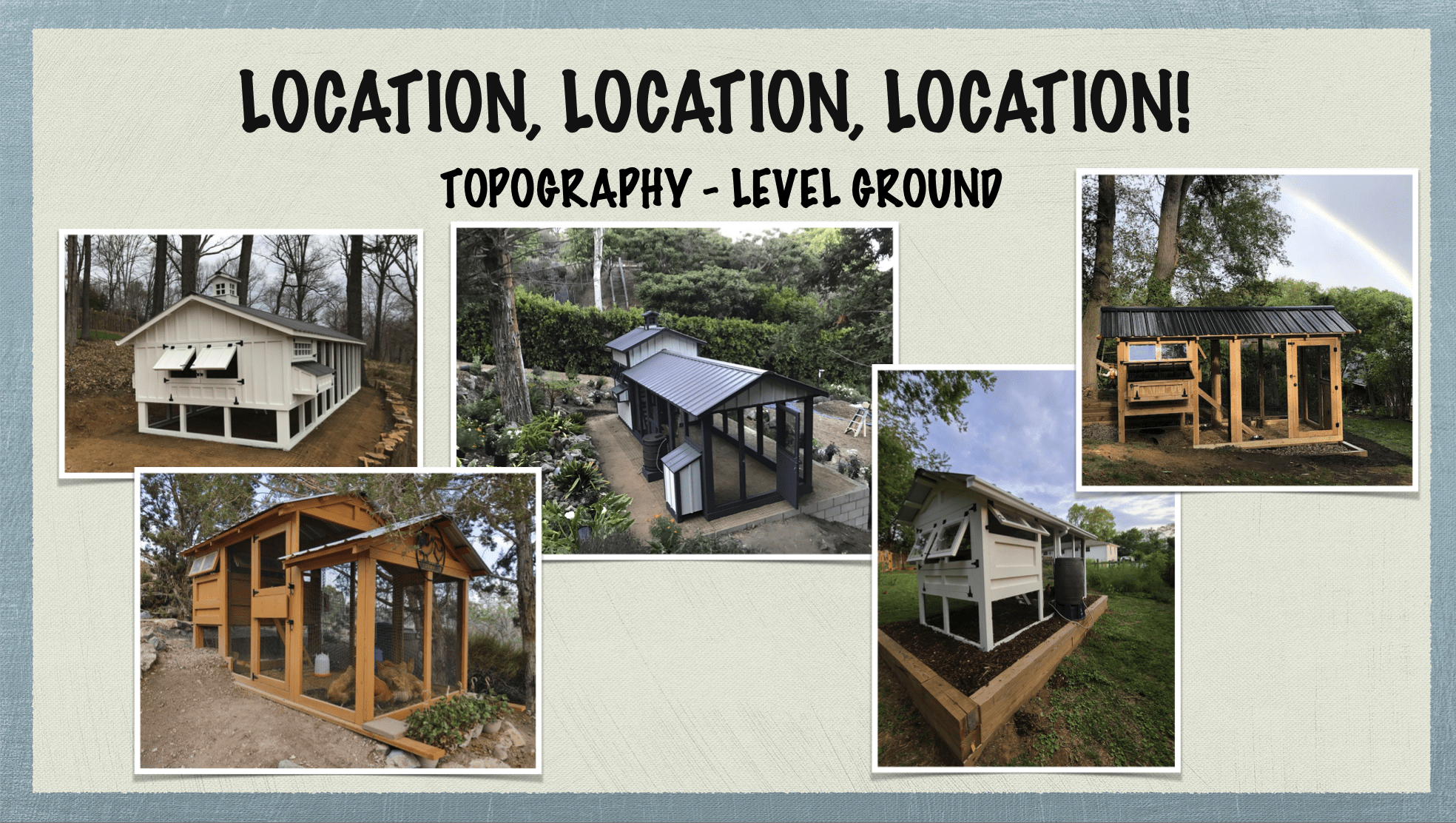
It is critically important to have level ground when you are building or placing our coops or any coop for that matter. The doors won’t close properly, predators can get in, the walls and the roofing will be a nightmare if you don’t start with level ground.
There are ways to work with the topography of your land. You can build a base that creates level ground, you can step down the run, but whatever you decide to do, keep putting your coop on a level ground in mind.
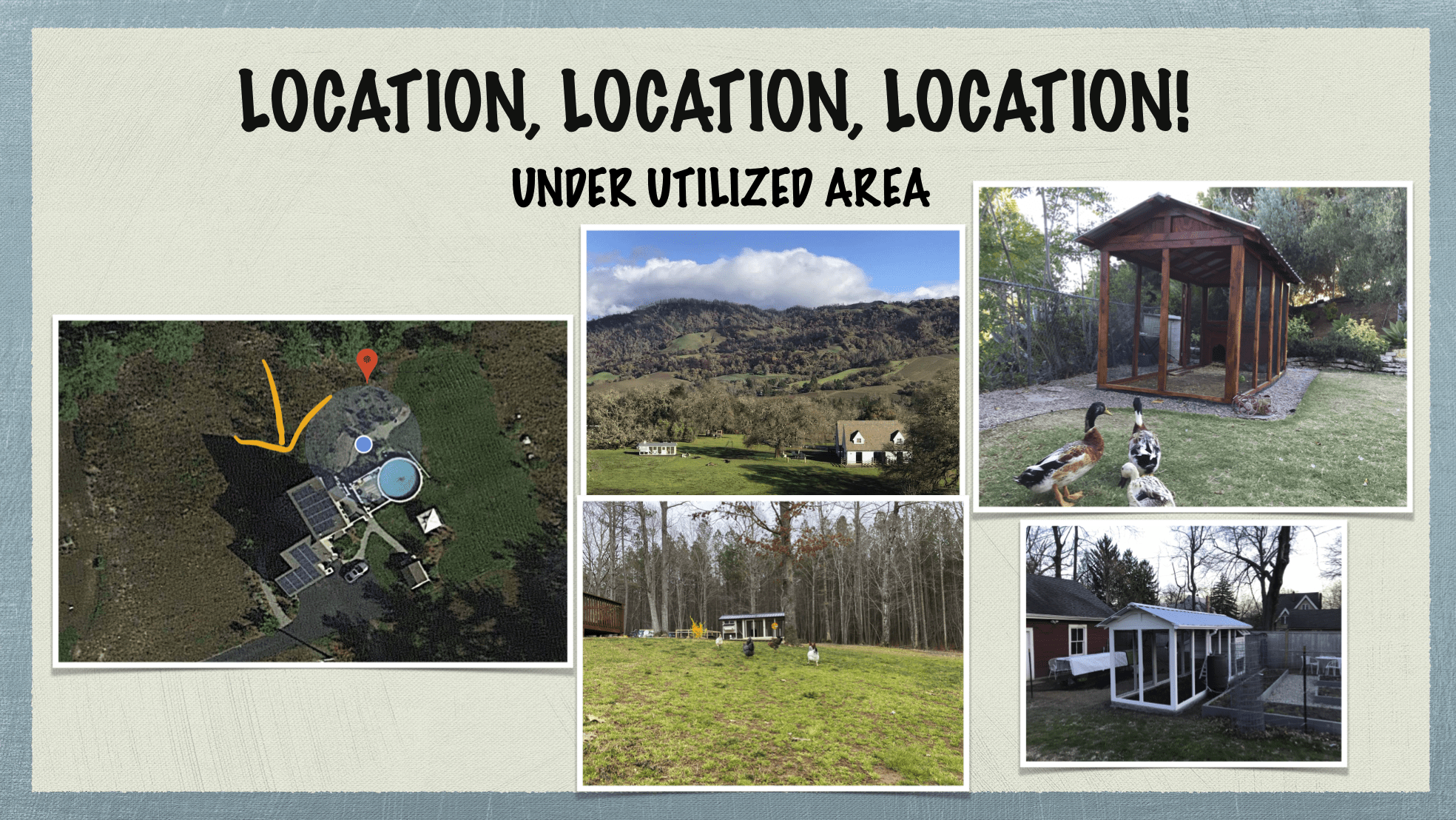
You may have a part of your property that is under-utilized. Sometimes it may be in a corner of your yard that has nothing going on. Other times it’s right in the middle or near a stand of trees. Using a spot that is being neglected or just not used purposefully may turn out to be the perfect place for your chicken coop.
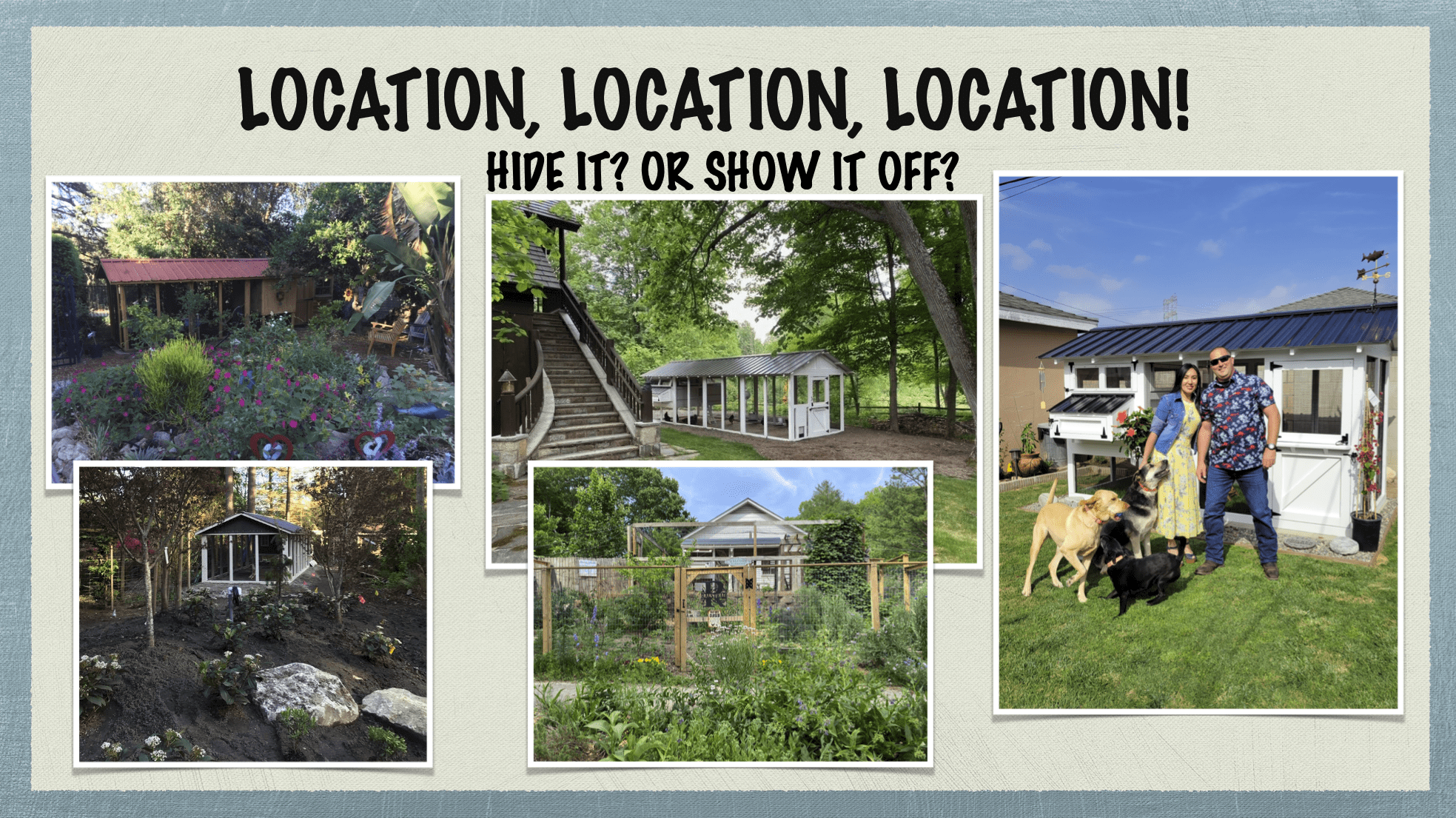
Hide it? Or show it off? There are reasons for both. Some people want to hide the coop because of neighbors, an HOA, or for other reasons. (We are not advocating getting a coop without checking to see if there are restrictions with convenants or an HOA)
Other people are ore than happy to put their coop front and center of their property.
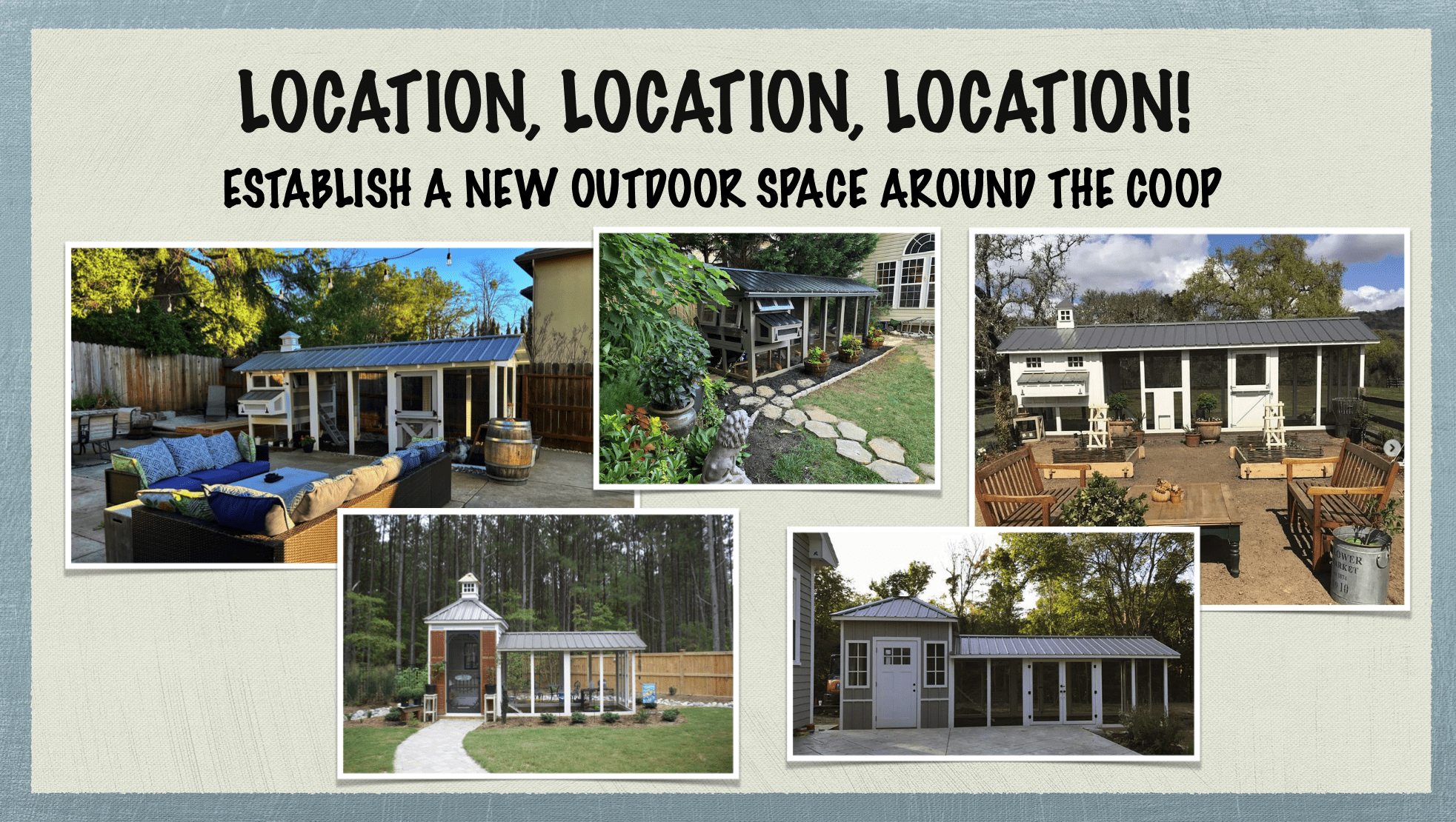
For those people who want to show off their coop, you can go even further and really incorporate your chicken coop by showcasing it in your outdoor space.
Many of our customers establish outdoor seating around the coop or put it front and center in their patio space. Chicken people know how entertaining and therapeutic is to watch chickens.
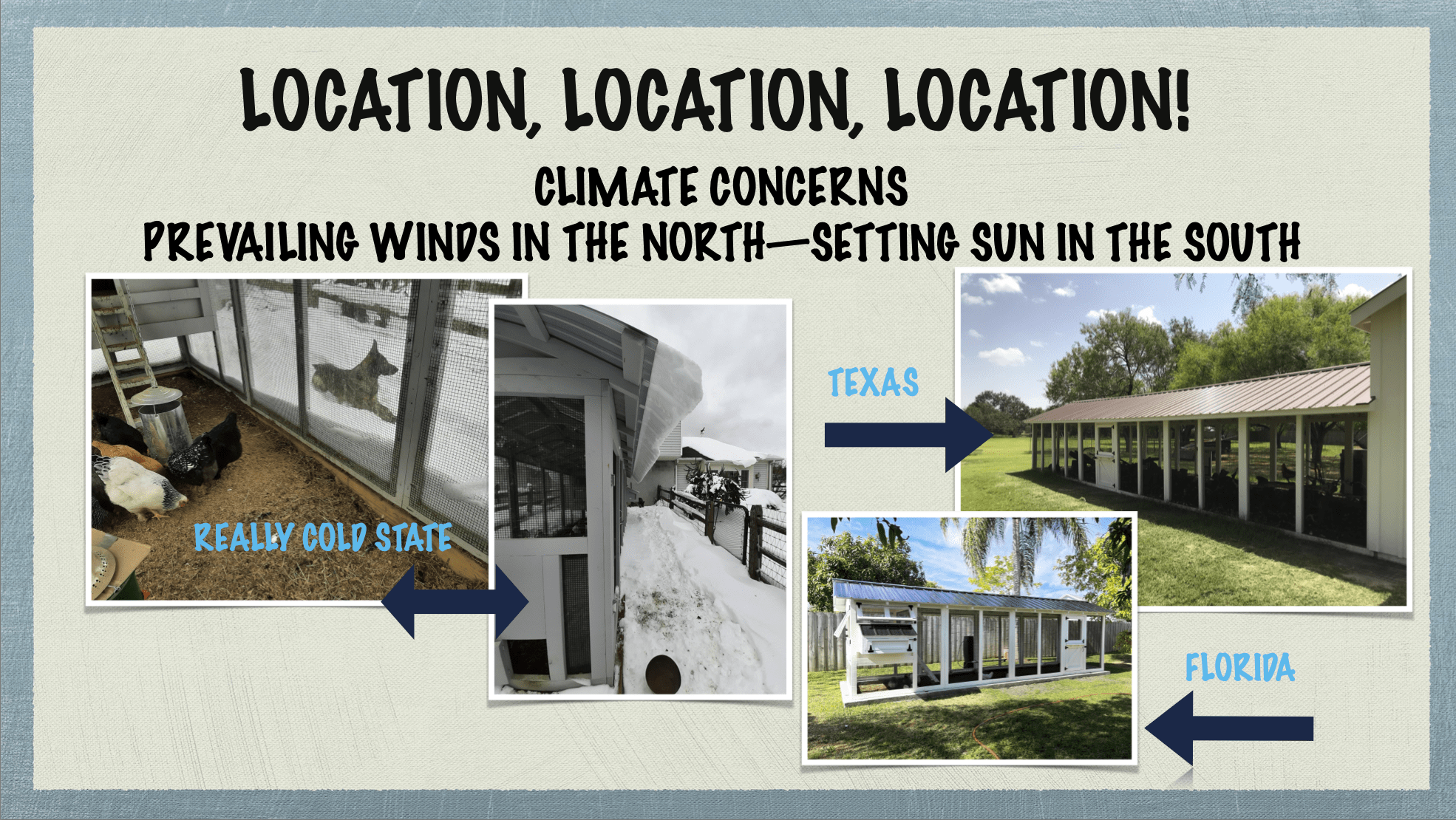
Climate concerns are important when placing your coop. You want to make sure your flock is protected from the prevailing winds in the winter if you live in northern states.
In the same respect, you want to consider the strong summer sun in southern states.
We sell our winter storm shields for protecting your flock from snow, sleet, and strong winds. Also our metal roofs keep the run cooler and shaded in the summer sun. (yes, even black roofing)
These are still aspects you may want to take into consideration.
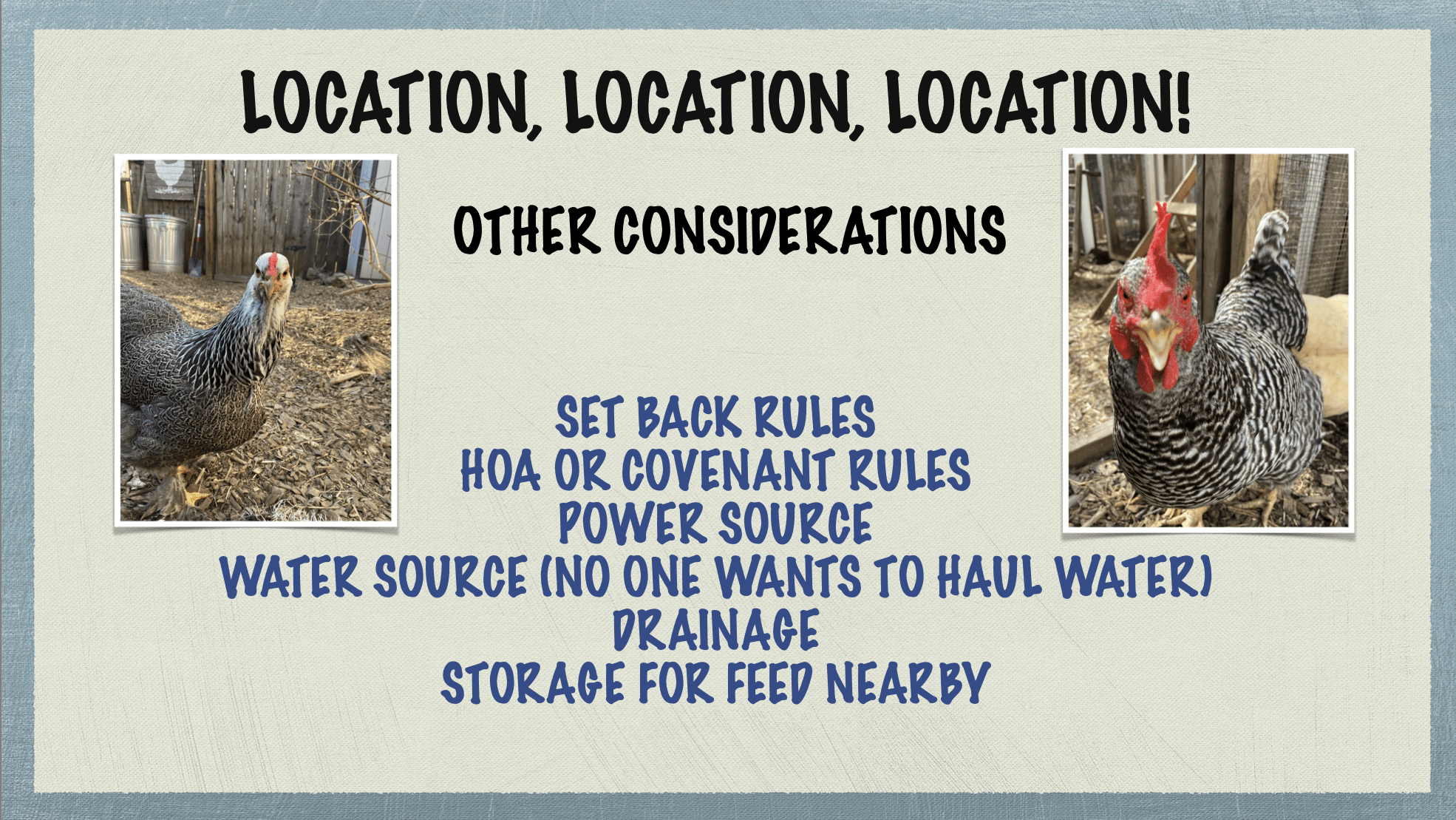
Wrapping up the location aspect of coop placement, there are other considerations to keep in mind. They include rules for your property, such as set-back rules, HOAs, and convenants, power and water sources, drainage, and a place to store your feed and other chicken paraphernalia nearby.
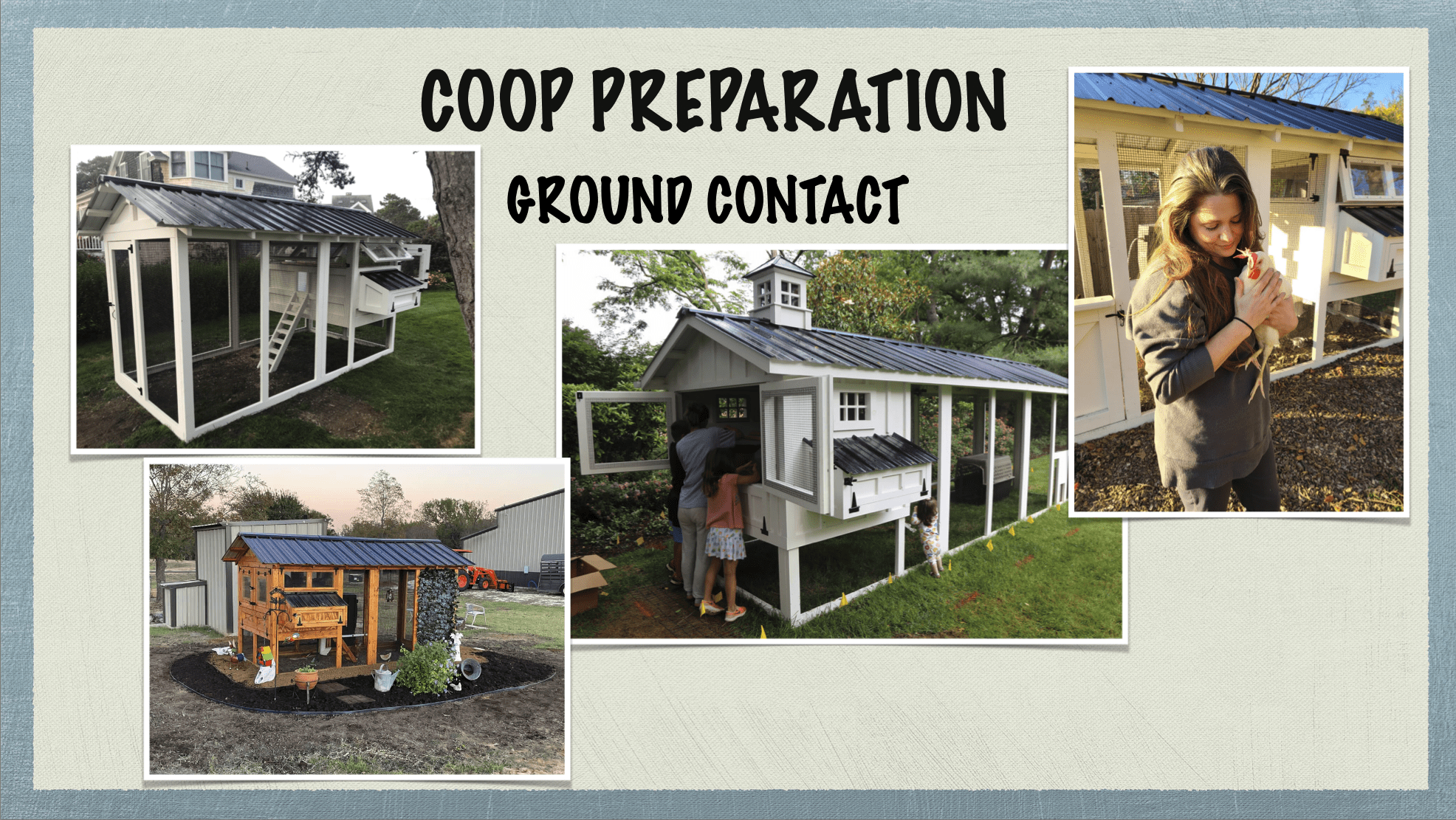
If your ground is level, there is no reason you cannot just put one of our coops directly on the ground. The wood we use that makes ground contact is pressure treated, so it will withstand ground contact. (The rest of the coop is not pressure treated wood)
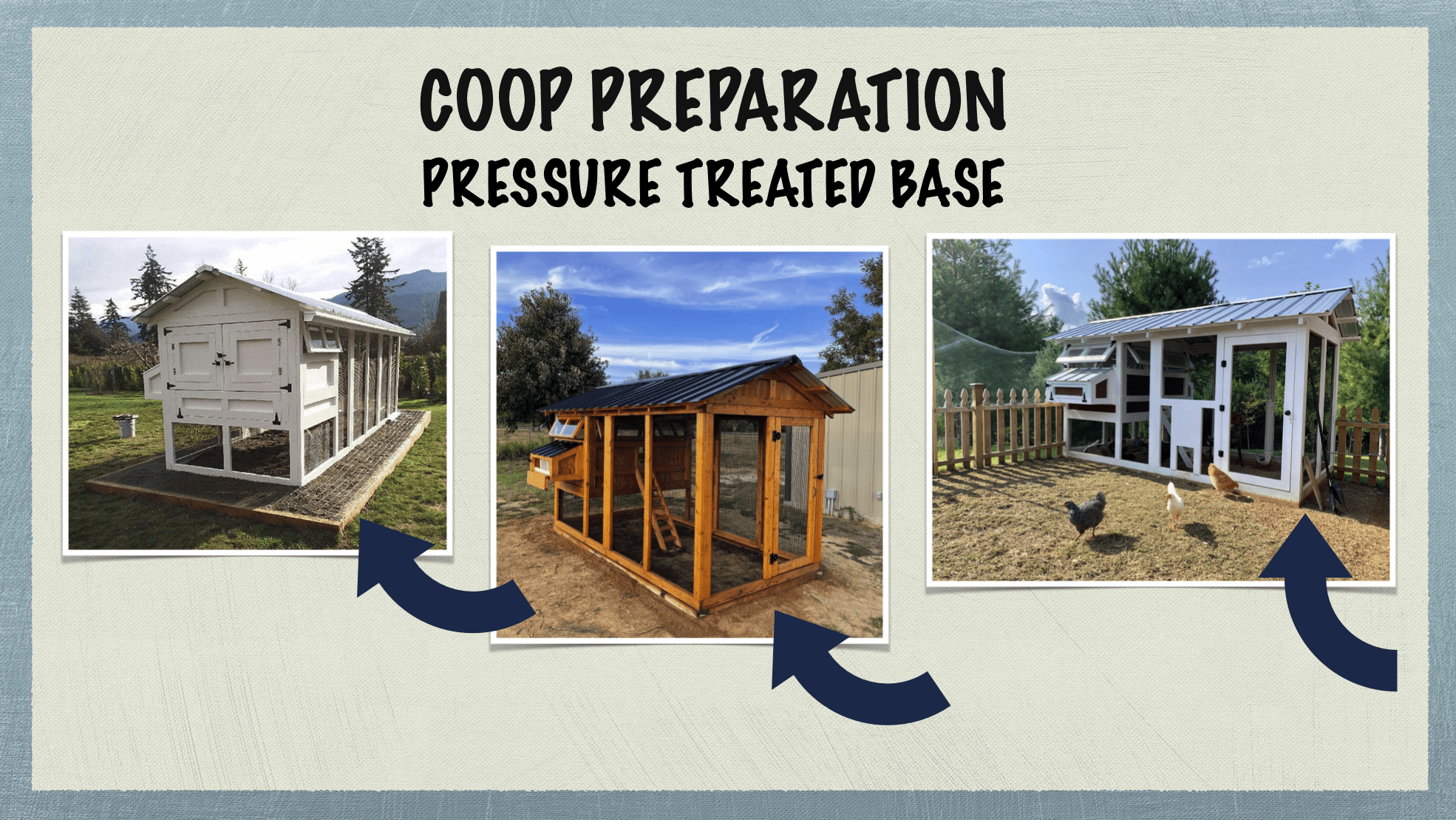
If your ground isn’t level or you just want an added layer of protection on the bottom of your coop, you can put down a pressure treated base.
If your base is just to preserve the bottom of your coop (like we said above, it’s not necessary, it’s a nice to have feature), then you need to decide if you want make it flush to the outside of the coop or the inside of the coop, or even flush to both.
Other times, the pressure treated base helps level out your ground.
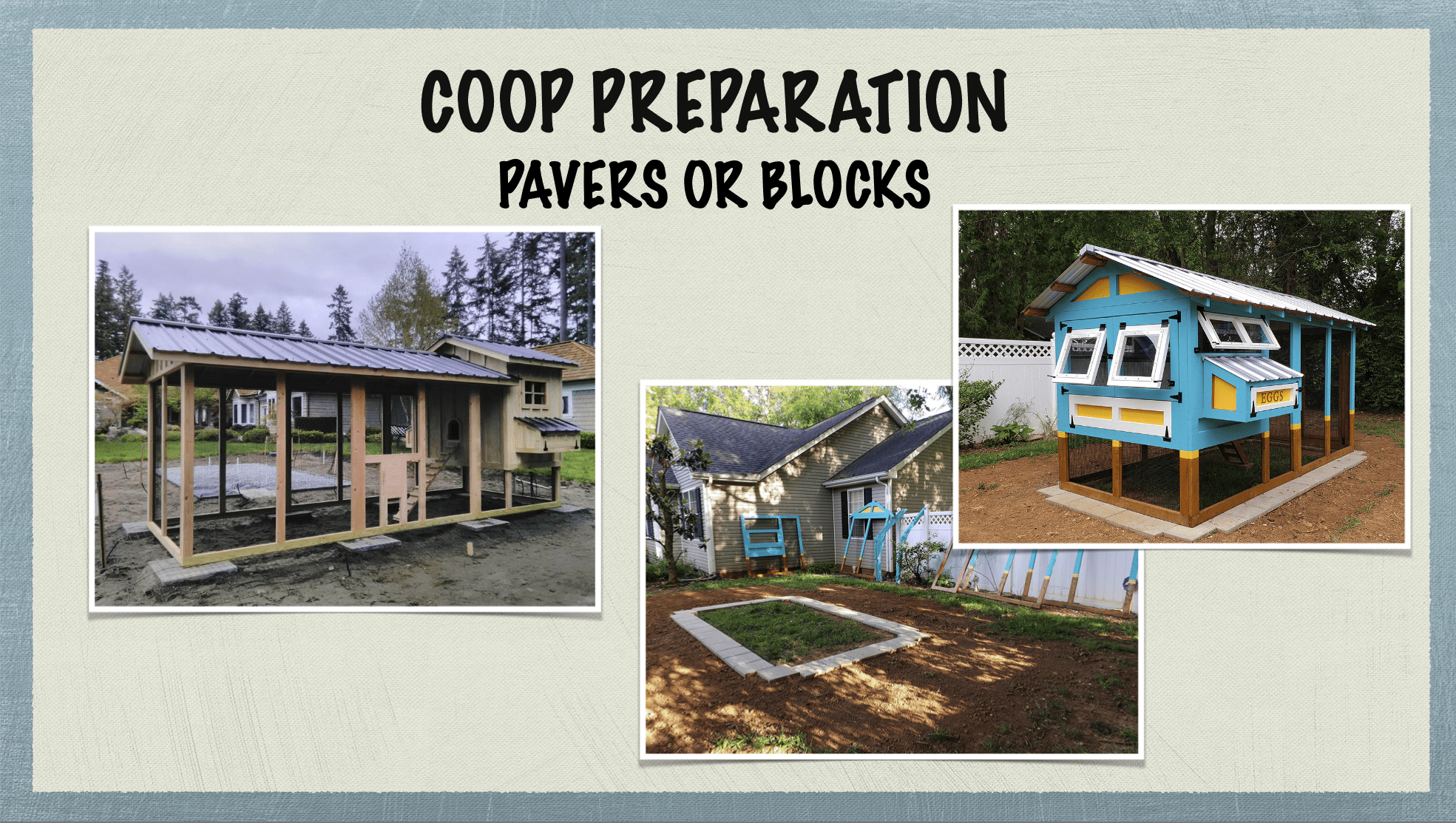
Some people use pavers or blocks as a base for their coop. This is perfectly fine, however, the one caveat is that you may want to use crush and run gravel underneath it.
Chickens like to dig, and the soil around your coop will erode. With an entire pressure treated base, for example, it allows for the coop to move like a boat on the sea. But with pavers, if one section or one block is no longer level (as in: chickens like to dig), then your coop will not sit level.
But if you can make it work, and that’s what you have or want to work with, then go for it, just take the above mentioned into consideration.
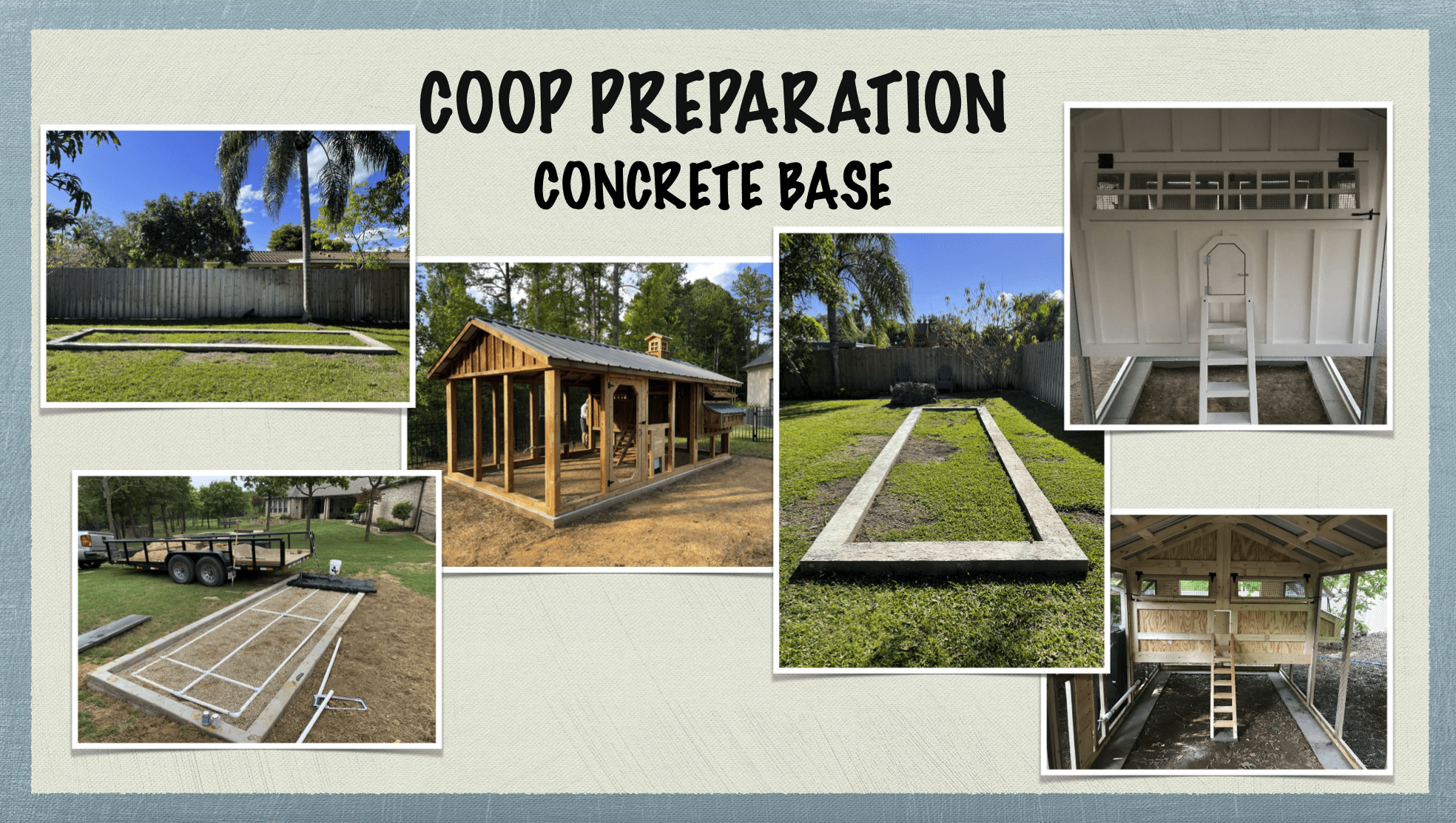
Last, but certainly not least, is a concrete base. This is the Cadillac of coop bases and is not necessary. However, if you can swing either by doing it yourself, or hiring someone to do it, it makes for an amazing base. You can also attach a sill plate and anchor bolts so your coop will be secure if you live a hurricane or extremely high wind zone.
As with the pressure treated base, you can have your concrete base flush to the interior or exterior of your coop or your coop would live in the middle of the base.
If you choose to go this route, please contact us to get the exact exterior measurements of your particular coop. This is especially true if you plan on doing this in preparation of our team installing your coop.
We hope all this information helps you to make a more informed decision on exacting where you want to place your coop. Because let’s face it, our coops are heavy, and you really don’t want to have to move it if you don’t have to.
For more details on Coop Placement and Site Preparation, please watch the Video Chicken Live episode where we went over each of these factors.





